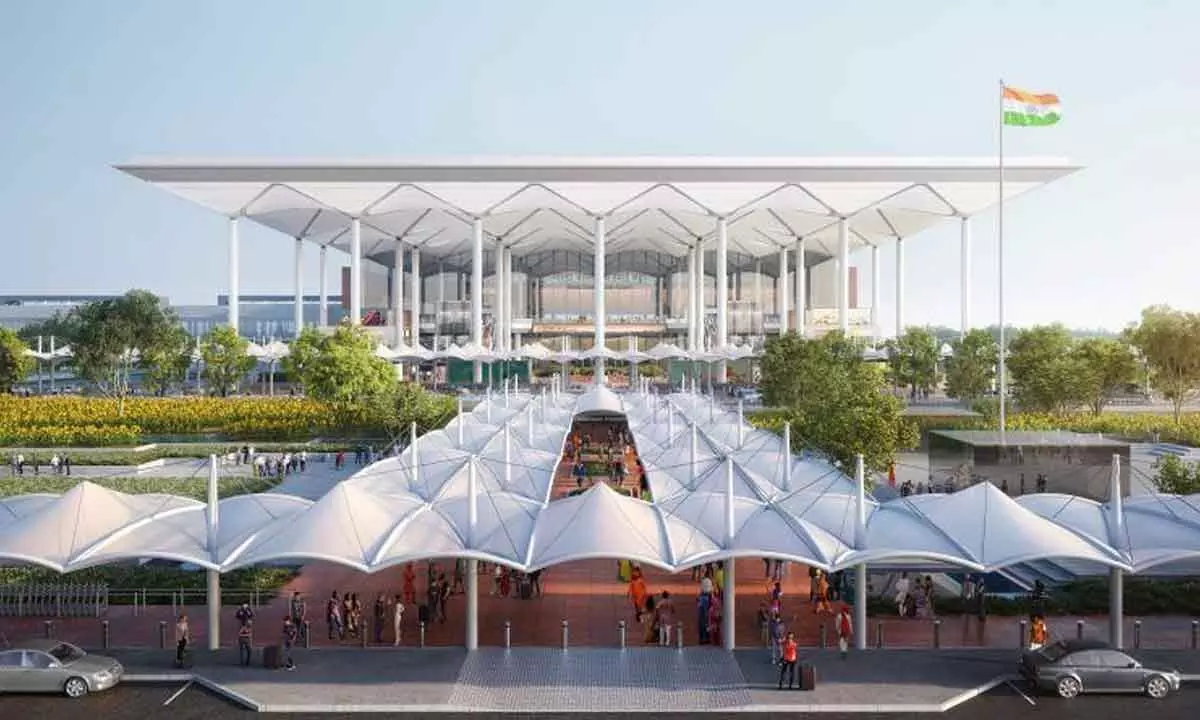Noida International Airport can help Indian aviation sector soar higher
NIA is likely to have an annual movement of 1.2 crore passengers
image for illustrative purpose

Indian aviation has come a long way since the time the national capital’s only airport, Safdarjung Airport, was formally inaugurated on March 10, 1931. However, its ‘symbolic’ establishment had taken place two years earlier in 1929, when it was known as the Willingdon Air Field, which, in due course, was rechristened as Willingdon Airport. Post-independence, it was renamed as Safdarjung Airport. Forces of the Allied countries used the airfield extensively during World War II.
If everything goes as per plan, the Noida International Airport (NIA) will start its operations at Jewar from March. This is a timely addition as the Indira Gandhi International Airport IGIA) is facing increased air-traffic and passenger-handling saturation, which has also been endorsed by Airport Council International (ACI).
A recent ACI report says that IGIA catered to a whopping 5.95 crore domestic and international passengers last year. Quite apparently, the steady rise will, as an off-shoot, also increase demands for streamlined operations, which IGIA may not be able to handle as efficiently. Its saviour will come in the form of the ultra-modern Noida International Airport, which can reduce IGIA’s burden by significant levels and provide relief to passengers. Moreover, the panning has been so meticulous that it is well connected. The moment passengers come out of the NIA, they can directly go to Yamuna Expressway and reach Noida-Greater Noida Expressway, while those heading towards heading to Uttar Pradesh and Haryana can take advantage of Peripheral Expressway. Given these conveniences, it is imperative that the completion process is expedited.
Apart being promoted as a hub for air cargo, the airport will also boast of 40 acres of land for maintenance repairing and overhauling (MRO) operations, including servicing aircrafts from India and abroad. At present 85 per cent of Indian aircraft are sent abroad for MRO, which translates to an annual expenditure of a staggering Rs. 15,000 crore.
The Union Home and Aviation ministries along with the Uttar Pradesh government are working in tandem to make NIA operational before time. Noida International Airport Ltd was incorporated in 2018 as a joint venture of the government of Uttar Pradesh, NOIDA, Greater NOIDA and Yamuna Expressway Industrial Development Authority (YEIDA). Once it becomes operational, Uttar Pradesh will have five international airports, the highest for any state in India.
Indian aviation has come a long way since the time the national capital’s only airport, Safdarjung Airport, was formally inaugurated on March 10, 1931. However, its ‘symbolic’ establishment had taken place two years earlier in 1929, when it was known as the Willingdon Air Field, which, in due course, was rechristened as Willingdon Airport.
Post-independence, it was renamed as Safdarjung Airport. It remained Delhi’s main airport till 1962.
It is quite ironic that some planes had started landing here in 1927. Forces of the Allied countries used the airfield extensively during World War II.
In view of the growing demand for better air traffic services, Delhi’s second airport, the Palam Airport came into being. Safdarjung airport was closed in 2002 due to security reasons after the 26/11 shocker that devastated the United States and the entire world.
However, thanks to Safdarjung airport’s reputation, it is even today used by the President, Prime Minister and other distinguished personalities.
Within 20 years of the inception of IGIA, the country has once again felt the need for a new world-class airport to cater to the rapidly developing and expanding aviation and tourism sectors of the country. The decision to build the swanky NIA is an acknowledgment of this need. Being built at a cost of Rs. 30,000 crore, it will dislodge IGI as India’s largest airport in terms of passenger movement.
The Aviation ministry has estimated that when flights commence operation from Noida International Airport, there will be an annual movement of 1.2 crore passengers. Air services will begin from here to various cities.
For example, about 100 flights operate everyday between Delhi and Mumbai and about half of them can be operated from Noida airport apart from flights to Bangalore, Chennai, Kashi, Patna, Ranchi, Leh and Goa, among others. Ambitious plans are also afoot to promote some flights to international destinations like London, Dubai, Zurich and US cities. Many big airline companies have evinced interest in making Jewar Airport an Asia-Pacific transit hub. This includes Air India, Air Asia, Vistara and Indigo further boosting the number of passengers at the airport.
Reportedly, tickets will be cheaper by almost Rs. 1, 500 at NIA compared to IGIA. This is largely because of the difference in Aviation Turbine Fuel (ATF) duty in Delhi and Uttar Pradesh, where Noida is situated. For the large number of professionals, engineers, entrepreneurs and foreign nationals like Japanese, South Koreans, living in Noida and Greater Noida, who frequently travel on official work, the Jewar airport will be a blessing in disguise. The new airport will also be giving a boost to corporate travel and leisure opportunities, and bring Noida and Greater Noida at par with the millennium city of Gurugram, say experts
Plans to extend Metro services from Noida to NIA and the proposed High Speed Rail (Delhi-Varanasi) at the airport terminal, along with upgrading all Expressways the freight corridor and interconnecting them will have a long-lasting and positive impact on passenger convenience.
Most importantly, a functional Noida International Airport will propel Indian aviation sector to newer heights.
(The author is Delhi-based senior journalist and writer. He is author of Gandhi's Delhi which has brought to the forth many hidden facts about Mahatma Gandhi)

